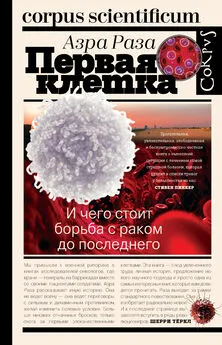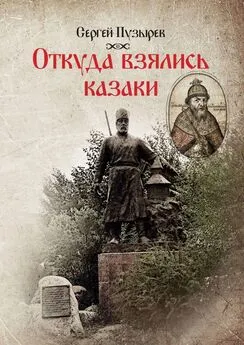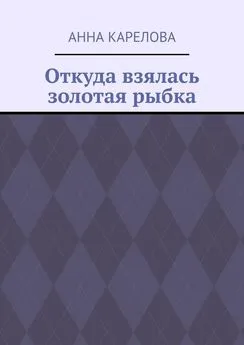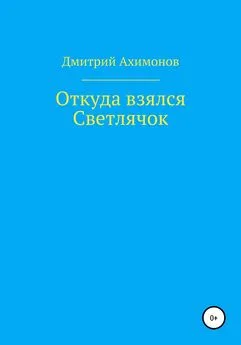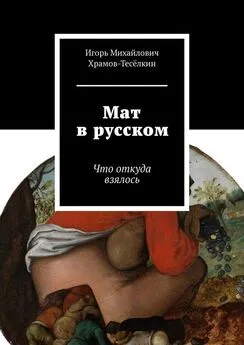Афина Актипис - Клетка-предатель. Откуда взялся рак и почему его так трудно вылечить
- Название:Клетка-предатель. Откуда взялся рак и почему его так трудно вылечить
- Автор:
- Жанр:
- Издательство:ООО «ЛитРес», www.litres.ru
- Год:2020
- ISBN:нет данных
- Рейтинг:
- Избранное:Добавить в избранное
-
Отзывы:
-
Ваша оценка:
Афина Актипис - Клетка-предатель. Откуда взялся рак и почему его так трудно вылечить краткое содержание
Клетка-предатель. Откуда взялся рак и почему его так трудно вылечить - читать онлайн бесплатно ознакомительный отрывок
Интервал:
Закладка:
“BRCA Mutations: Cancer Risk and Genetic Testing”. National Cancer Institute, February 5, 2018. https://www.cancer.gov/about-cancer/causes-prevention/genetics/brca-fact-sheet.
Brown, J. S., and C. A. Aktipis. “Inclusive Fitness Effects Can Select for Cancer Suppression into Old Age”. Philosophical Transactions of the Royal Society of London, Series B: Biological Sciences 370, no. 1673 (2015). https://doi.org/10.1098/rstb.2015.0160.
Broxterman, H. J., H. M. Pinedo, C. M. Kuiper, L. C. Kaptein, G. J. Schuurhuis, and J. Lankelma. “Induction by Verapamil of a Rapid Increase in ATP Consumption in MultidrugResistant Tumor Cells”. FASEB Journal 2, no. 7 (April 1988): 2278–82.
Bullock, A. N., and A. R. Fersht. “Rescuing the Function of Mutant p53”. Nature Reviews Cancer 1, no. 1 (October 2001): 68–76.
Burns, Kathleen H. “Transposable Elements in Cancer”. Nature Reviews Cancer 17, no. 7 (July 2017): 415–24.
Buss, L. W. “Somatic Cell Parasitism and the Evolution of Somatic Tissue Compatibility”. Proceedings of the National Academy of Sciences of the United States of America 79, no. 17 (September 1982): 5337–41.
Buss, Leo W. The Evolution of Individuality. Prince ton, NJ: Prince ton University Press, 1987.
Cairns, J. “Mutation Selection and the Natural History of Cancer”. Nature 255, no. 5505 (1975): 197–200.
Campisi, Judith. “Cancer and Ageing: Rival Demons?” Nature Reviews Cancer 3, no. 5 (May 2003): 339–49.
Capasso, Luigi L. “Antiquity of Cancer”. International Journal of Cancer 113, no. 1 (January 2005): 2–13.
“Carcinogens Listed in the Eleventh Report”. In The Report on Carcinogens, 11th ed. Durham, NC: National Toxicology Program, U. S. Department of Health and Human Ser vices, 2011.
https://web.archive.org/web/20090507123840if_/http://ntp.niehs.nih.gov/ntp/roc/eleventh/known.pdf.
Caulin, A. F., and C. C. Maley. “Peto’s Paradox: Evolution’s Prescription for Cancer Prevention”. Trends in Ecology and Evolution 26, no. 4 (February 2011): 175–82.
Cavallo, F., C. De Giovanni, P. Nanni, G. Forni, and P. L. Lollini. “2011: The Immune Hallmarks of Cancer”. Cancer Immunology, Immunotherapy 60, no. 3 (2011): 319–26.
Chakrabarty, A. M. “Microorganisms and Cancer: Quest for a Therapy”. Journal of Bacteriology 185, no. 9 (May 2003): 2683–86.
Chapman, Anna, Laura Fernandez del Ama, Jennifer Ferguson, Jivko Kamarashev, Claudia Wellbrock, and Adam Hurlstone. “Heterogeneous Tumor Subpopulations Cooperate to Drive Invasion”. Cell Reports 8, no. 3 (August 2014): 688–95.
Chiarella, Paula, Juan Bruzzo, Roberto P. Meiss, and Raúl A. Ruggiero. “Concomitant Tumor Resistance”. Cancer Letters 324, no. 2 (November 2012): 133–41.
Churchill, Winston S. November 11, 1947. The International Churchill Society. https://winstonchurchill.org/resources/quotes/the-worst-form-of-government/
ClavelChapelon, F., and E3N Group. “Cumulative Number of Menstrual Cycles and Breast Cancer Risk: Results from the E3N Cohort Study of French Women”. Cancer Causes and Control 13, no. 9 (November 2002): 831–38.
Cline, Melissa S., Rachel G. Liao, Michael T. Parsons, Benedict Paten, Faisal Alquaddoomi, Antonis Antoniou, Samantha Baxter, et al. “BRCA Challenge: BRCA Exchange as a Global Resource for Variants in BRCA1 and BRCA2”. PLoS Genetic s 14, no. 12 (December 2018): e1007752.
Coan, P. M., G. J. Burton, and A. C. Ferguson-Smith. “Imprinted Genes in the Placenta — A Review”. Placenta 26, suppl. A (2005): S10– S20.
Collado, Manuel, Maria A. Blasco, and Manuel Serrano. “Cellular Senescence in Cancer and Aging”. Cell 130, no. 2 (July 2007): 223–33.
Connor, Stephen R., Bruce Pyenson, Kathryn Fitch, Carol Spence, and Kosuke Iwasaki. “Comparing Hospice and Nonhospice Patient Survival among Patients Who Die within a ThreeYear Window”. Journal of Pain and Symptom Management 33, no. 3 (March 2007): 238–46.
Correa, Raul, Philip C. Thornton, Susan M. Rosenberg, and P. J. Hastings. “Oxygen and RNA in Stress-Induced Mutation”. Current Genetic s 64, no. 4 (August 2018): 769–76.
Cougnoux, Antony, Guillaume Dalmasso, Ruben Martinez, Emmanuel Buc, Julien Delmas, Lucie Gibold, Pierre Sauvanet, et al. “Bacterial Genotoxin Colibactin Promotes Colon Tumour Growth by Inducing a Senescence-Associated Secretory Phenotype”. Gut 63, no. 12 (December 2014): 1932–42.
Cronk, Lee, Colette Berbesque, Thomas Conte, Matthew Gervais, Padmini Iyer, Brighid McCarthy, Dennis Sonkoi, Cathryn Townsend, and Athena Aktipis.
“Managing Risk through Cooperation: NeedBased Transfers and Risk Pooling among the Societies of the Human Generosity Project”. In Global Perspectives on Long-term Community Resource Management, edited by L. Lozny and T. McGovern, 41–75. New York: Springer, 2019.
Cuzick, Jack, Florian Otto, John A. Baron, Powel H. Brown, John Burn, Peter Greenwald, Janusz Jankowski, et al. “Aspirin and NonSteroidal AntiInflammatory Drugs for Cancer Prevention: An International Consensus Statement”. Lancet Oncology 10, no. 5 (May 2009): 501–7.
Dalmasso, Guillaume, Antony Cougnoux, Julien Delmas, Arlette DarfeuilleMichaud, and Richard Bonnet. “The Bacterial Genotoxin Colibactin Promotes Colon Tumor Growth by Modifying the Tumor Microenvironment”. Gut Microbes 5, no. 5 (2014): 675–80.
Daum, Hagit, Tamar Peretz, and Neri Laufer. “BRCA Mutations and Reproduction”. Fertility and Sterility 109, no. 1 (January 2018): 33–38.
Davis, S., D. K. Mirick, and R. G. Stevens. “Night Shift Work, Light at Night, and Risk of Breast Cancer”. Journal of the National Cancer Institute 93, no. 20 (October 2001): 1557–62.
Dawkins, Richard. The Selfish Gene. Oxford: Oxford University Press, 1976.
de Martel, Catherine, Jacques Ferlay, Silvia Franceschi, Jérôme Vignat, Freddie Bray, David Forman, and Martyn Plummer. “Global Burden of Cancers Attributable to Infections in 2008: A Review and Synthetic Analysis”. Lancet Oncology 13, no. 6 (June 2012): 607–15.
Diaz, Luis A., Jr., Richard T. Williams, Jian Wu, Isaac Kinde, J. Randolph Hecht, Jordan Berlin, Benjamin Allen, et al. “The Molecular Evolution of Acquired Resistance to Targeted EGFR Blockade in Colorectal Cancers”. Nature 486, no. 7404 (June 2012): 537–40.
Dobzhansky, Theodosius. “Nothing in Biology Makes Sense Except in the Light of Evolution”. American Biology Teacher 35, no. 3 (March 1973): 125–29.
Dugatkin, Lee Alan. “Animal Cooperation among Unrelated Individuals”. Die Naturwissenschaften 89, no. 12 (December 2002): 533–41.
Dunn, Gavin P., Allen T. Bruce, Hiroaki Ikeda, Lloyd J. Old, and Robert D. Schreiber. “Cancer Immunoediting: From Immunosurveillance to Tumor Escape”. Nature Immunology 3, no. 11 (November 2002): 991–98.
Dvorak, Harold F. “Tumors: Wounds That Do Not Heal”. New England Journal of Medicine 315, no. 26 (December 1986): 1650–59.
Eisenhoffer, George T., Patrick D. Loftus, Masaaki Yoshigi, Hideo Otsuna, ChiBin Chien, Paul A. Morcos, and Jody Rosenblatt. “Crowding Induces Live Cell Extrusion to Maintain Homeostatic Cell Numbers in Epithelia”. Nature 484, no. 7395 (April 2012): 546–49.
Elser, James J., Marcia M. Kyle, Marilyn S. Smith, and John D. Nagy. “Biological Stoichiometry in Human Cancer”. PloS One 2, no. 10 (2007): e1028.
Ember, Melvin, Carol R. Ember, and Bobbi S. Low. “Comparing Explanations of Polygyny”. Cross-Cultural Research 41, no. 4 (November 2007): 428–40.
EnriquezNavas, Pedro M., Yoonseok Kam, Tuhin Das, Sabrina Hassan, Ariosto Silva, Parastou Foroutan, Epifanio Ruiz, et al. “Exploiting Evolutionary Principles to Prolong Tumor Control in Preclinical Models of Breast Cancer”. Science Translational Medicine 8, no. 327 (February 2016): 327ra24.
Ewald, Paul W. “An Evolutionary Perspective on Parasitism as a Cause of Cancer”. In Advances in Parasitology, vol. 68, 21–43. Cambridge, MA: Academic Press, 2009.
Featherston, J., and P. M. Durand. “Cooperation and Conflict in Cancer: An Evolutionary Perspective”. South African Journal of Science 108, no. 9–10 (January 2012).
Fernandez, André A., and Paul R. Bowser. “Selection for a Dominant Oncogene and Large Male Size as a Risk Factor for Melanoma in the Xiphophorus Animal Model”. Molecular Ecology 19, no. 15 (August 2010): 3114–23.
Ferreri, Andrés J. M., Silvia Govi, Elisa Pasini, Silvia Mappa, Francesco Bertoni, Francesco Zaja, Carlos Montalbán, et al. “Chlamydophila Psittaci Eradication with Doxycycline as FirstLine Targeted Therapy for Ocular Adnexae Lymphoma: Final Results of an International Phase II Trial”. Journal of Clinical Oncology 30, no. 24 (August 2012): 2988–94.
Finn, Olivera J. “ Human Tumor Antigens Yesterday, Today, and Tomorrow”. Cancer Immunology Research 5, no. 5 (May 2017): 347–54.
Fleming, J. M., K. E. Creevy, and D. E. L. Promislow. “Mortality in North American Dogs from 1984 to 2004: An Investigation into Age, Size, and BreedRelated Causes of Death”. Journal of Veterinary Internal Medicine 25, no. 2 (March 2011): 187–98.
Fletcher, J. A., and Michael Doebeli. “A Simple and General Explanation for the Evolution of Altruism”. Proceedings of the Royal Society B: Biological Sciences 276, no. 1654 (2009): 13–19.
Flossmann, Enrico, Peter M. Rothwell, and British Doctors Aspirin Trial and the U. K. TIA Aspirin Trial. “Effect of Aspirin on Long-term Risk of Colorectal Cancer: Consistent Evidence from Randomised and Observational Studies”. Lancet 369, no. 9573 (May 2007): 1603–13.
Frank, S. A., and M. A. Nowak. “Cell Biology: Developmental Predisposition to Cancer”. Nature 422, no. 6931 (2003): 494.
Gabrilovich, D., and V. Pisarev. “Tumor Escape from Immune Response: Mechanisms and Targets of Activity”. Current Drug Targets 4, no. 7 (2003): 525–36.
Gaines, Sara, Ashley J. Williamson, Neil Hyman, and Jessica Kandel. “How the Microbiome Is Shaping Our Understanding of Cancer Biology and Its Treatment”. Seminars in Colon and Rectal Surgery 29, no. 1 (March 2018): 12–16.
Gale, K. B., A. M. Ford, R. Repp, A. Borkhardt, C. Keller, O. B. Eden, and M. F.
Greaves. “Backtracking Leukemia to Birth: Identification of Clonotypic Gene Fusion Sequences in Neonatal Blood Spots”. Proceedings of the National Academy of Sciences of the United States of America 94, no. 25 (December 1997): 13950–54.
Gandhi, Manish J., and D. Michael Strong. “Donor Derived Malignancy Following Transplantation: A Review”. Cell and Tissue Banking 8, no. 4 (April 2007): 267–86.
Gärtner, H. V., C. Seidl, C. Luckenbach, G. Schumm, E. Seifried, H. Ritter, and B.
Bültmann. “Genetic Analysis of a Sarcoma Accidentally Transplanted from a Patient to a Surgeon”. New England Journal of Medicine 335, no. 20 (November 1996): 1494–96.
Gatenby, Robert A. “A Change of Strategy in the War on Cancer”. Nature 459, no. 7246 (2009): 508–9.
Gatenby, Robert A., and Robert J. Gillies. “A Microenvironmental Model of Carcinogenesis”. Nature Reviews Cancer 8, no. 1 (January 2008): 56–61.
Gatenby, Robert A., Ariosto S. Silva, Robert J. Gillies, and B. Roy Frieden. “Adaptive Therapy”. Cancer Research 69, no. 11 (June 2009): 4894–903.
Gerlinger, M., A. J. Rowan, S. Horswell, J. Larkin, D. Endesfelder, E. Gronroos, P.
Martinez, et al. “Intratumor Heterogeneity and Branched Evolution Revealed by Multiregion Sequencing”. New England Journal of Medicine 366, no. 10 (2012): 883–92.
Gerlinger, Marco, Stuart Horswell, James Larkin, Andrew J. Rowan, Max P. Salm, Ignacio Varela, Rosalie Fisher, et al. “Genomic Architecture and Evolution of Clear Cell Renal Cell Carcinomas Defined by Multiregion Sequencing”. Nature Genetic s 46, no. 3 (March 2014): 225–33.
Читать дальшеИнтервал:
Закладка:


